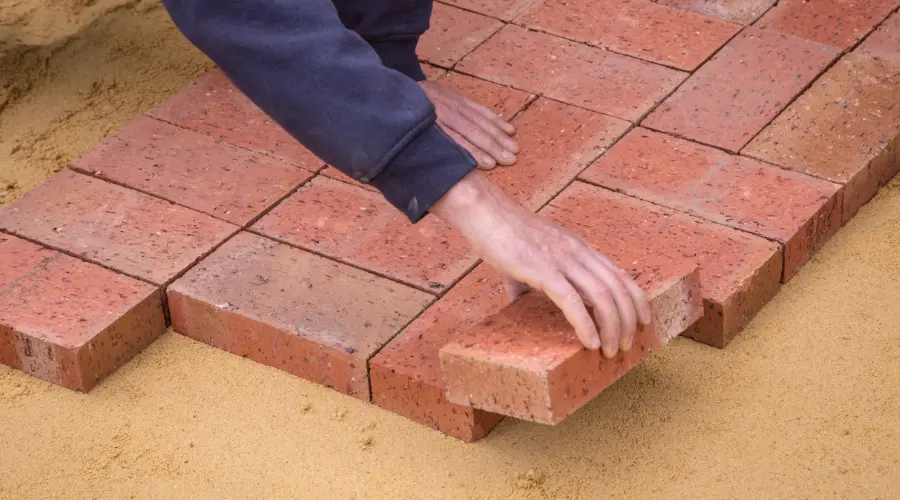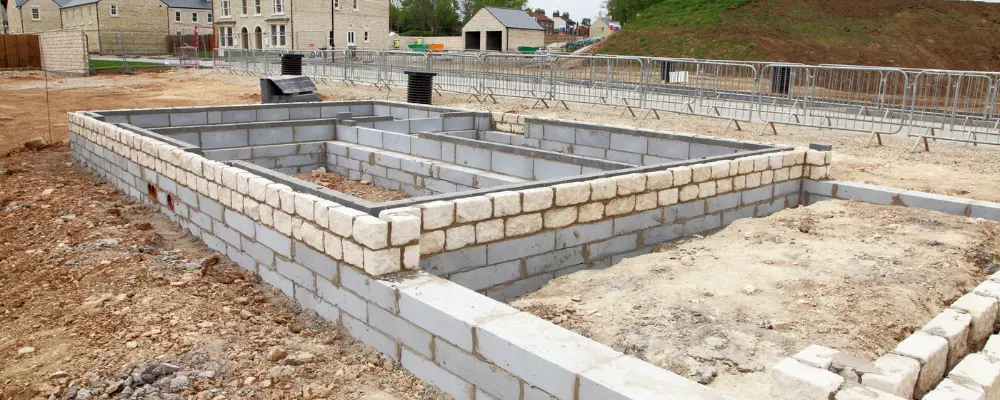Brick foundations serve as a building base for numerous structures, especially within the locality and context of traditional masonry constructions. They can bear moderately heavy loads and are one of the more durable forms of foundation systems. As with any structural component of a residential, commercial, or industrial building, brick foundations provide adequate support only when proper methods, planned design, quality materials, and good construction practices are utilised to avoid the issues associated with improper construction. Keep reading to understand more in detail.
What is a Brick Foundation?
A brick foundation is a brick masonry foundation made of brick held together in bonds with mortar. It transfers load from the superstructure of the building into the ground and distributes them safely across the soil. Brick foundations are moderately strong, fireproof, and can withstand moderate changes in the weather.
Types of Brick Foundations

Strip Foundations
Strip foundations are parallel courses of brickwork that are wide at the base and gradually get narrower at the top. They resemble a stepped structure and are laid under load-bearing walls. These types can be used in soils that have a good load bearing capacity of soil and are generally only used for low- to medium-rise buildings. A strip foundation can evenly distribute the building’s load and, as a result, help reduce any settlement.
Spread Foundations
A spread foundation is similar to a strip footing, but has a wider base at the bottom of the brickwork and can therefore spread the load over a bigger area. This type of foundation is more useful for supporting structures that have a heavier weight or in soil that has a lower load-bearing capacity. They are generally used for building basements in residences.
Stepped Foundations
Stepped foundations are built in a series of steps. These steps are used to address sloping sites or to accommodate different load-bearing capacities across varying depths of soil. In such sites, the steps prevent the foundation from sliding by spreading loads across a larger surface area, thus ensuring stability of the superstructure.
Inverted Arch Foundations
Inverted arch foundations use bricks in the form of arches beneath the walls but constructed upside down. They are used to bridge over weak areas or areas where you cannot put loads. Inverted arch foundations are complicated to construct and are thus not commonly utilised in modern construction, where they are typically substituted by RCC foundations.
Pros and Cons of Brick Foundations
Pros
- High resistance to compression
- Not flammable and fireproof
- Provides good thermal insulation, which is especially beneficial for energy-efficient designs
- Easy availability of materials and experienced labour in many areas.
Cons
- Vulnerable to water penetration and frost damage when not detailed properly
- The construction is labour-intensive.
- Has limited effectiveness in seismic zones compared to reinforced concrete foundations
- Regular maintenance is required to repair deteriorated mortar joints.
Applications of Brick Foundations
Brick foundations are typically used in:
- Low to mid-rise residential buildings, typically individual houses like villas
- Heritage and restoration projects
- Low and mid-rise commercial buildings
- Boundary and retaining walls
Brick foundations are most applicable in circumstances where soil conditions are reliable and loads are moderate.
Maintaining a Brick Foundation
Regular upkeep will allow for a longer lifespan of brick foundations. This includes taking steps like:
- Looking for cracks, bulges, and deterioration of mortar
- Repointing of mortar joints as necessary
- Resolving any drainage issues to limit water accumulation
- Install any water-resistant barriers or applications as necessary
Taking care of repairs as they arise will limit structural issues as well as possible costly repairs.
Cost of Brick Foundation Construction
The cost of constructing a brick foundation in India is shaped by several local factors, including:
- Site Conditions and Soil Type: Soft or loose soils may require deeper, wider foundations or some additional work for stabilisation, all of which can increase the cost of excavation, labour and materials. Rocky or hard soils could have reduced excavation costs, but may require special tools, or labour.
- Foundation Depth and Width: A conventional residential foundation (for single- and/or double-story homes) may require 1 to 1.5 meters of depth and 0.6 to 1.5 meter of width, depending on the load and type of soil. Larger structures, or load-bearing structures, will require substantial foundations, resulting in additional brick and mortar consumption.
- Quality and Type of Bricks and Mortar: Common burnt clay bricks (class 2 or 3) are widely used and cost ₹6 to ₹10 per brick (as of 2025). First-class bricks will be more expensive and may cost anywhere from ₹12 to ₹20 each. The cost of mortar (cement-sand mix) will vary according to grades of mortar, but on average, it may be expected to be about ₹300–₹400 for each 50 kg bag of cement, plus sand and water.
- Labour Costs and Local Rates: Mason (skilled labour) labor costs in India typically range from ₹600 to ₹1,200 a day, with a variation from region to region and by skills. Unskilled labour for excavating and support-related jobs will usually be about ₹400 to ₹700 per day. There is a trend of costs increasing in metro cities (Delhi, Mumbai, Bengaluru) when compared to towns and villages.
Typical Pricing Range
- Material costs (bricks + mortar) for a typical brick foundation: ₹350–₹600/sq ft (built-up area).
- Labour costs (includes brickwork, mortar, and basic excavation): ₹150–₹300/sq ft (may vary depending on the region and degree of complexity of the project)
- Total costs (material + labour): ₹500–₹900/sq ft (for normal residential projects, as of mid-2025)
Example Calculation (for a 1,000 sq ft house foundation):
| Component | Cost per sq ft | Total Cost (₹) |
| Material (bricks, mortar) | ₹500 | ₹5,00,000 |
| Labour | ₹200 | ₹2,00,000 |
| Total | ₹700 | ₹7,00,000 |
Note: Costs can vary considerably, depending on site location, soil condition, type of foundation (shallow or deep), and fluctuations in brick and mortar prices. Waterproofing, damp-proof courses and anti-termite treatments will increase the cost of a foundation, but are necessary for the durability of any built structure. If supplies of bricks and other materials are across a large distance from the site, then transport costs could also be considerable.
Cost Comparison
For small domestic buildings in India, brick foundations are typically cheaper than reinforced concrete foundations, particularly where labour is cheap and bricks are sourced from a local source. For multi-storey or heavy-load structures, reinforced concrete foundations could be more expensive at the outset, but in the longer run, will typically be more cost-effective due to high durability and low maintenance.
Conclusion
Brick foundations continue to be an appropriate solution for many types of building projects. They offer strength, durability, and aesthetic value. However, long-term performance relies on proper design, installation and maintenance. There are numerous types of brick foundations; however, when deciding to use a brick foundation, one must think about the type of soil, loading conditions, alternate structural systems, and regulatory building code requirements related to the type of foundation and how it is constructed. Consult experts like Brick & Bolt to get the best foundation recommendations for your project.

